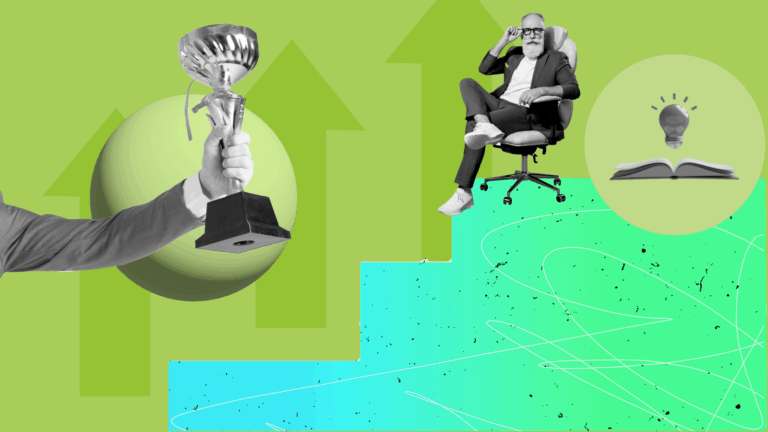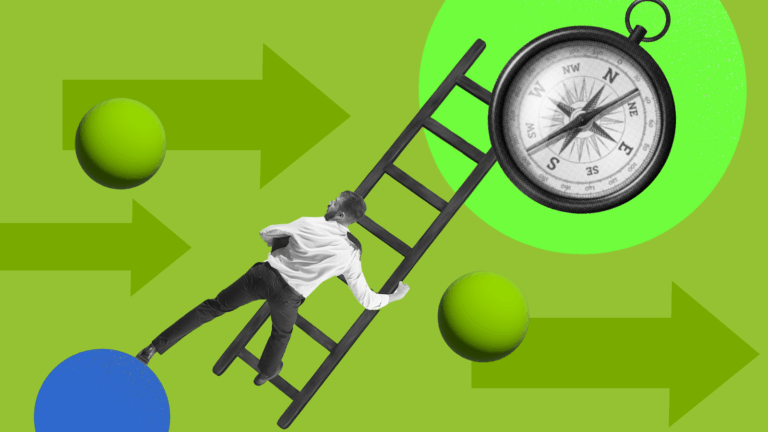
Career framework: Essential for the 2026 workforce
The traditional career ladder is crumbling. As companies prepare for 2026, 81% of employers now use skills-based hiring, abandoning outdated promotion criteria based on tenure alone. Smart organizations are building comprehensive career frameworks that align individual growth with business objectives while meeting the evolving expectations of today’s workforce.
要点
- Organizations with robust career frameworks see up to 24% improvement in retention rates
- 83% of employees stay longer with skills-first companies
- Companies can cut external hiring costs by 25% through internal mobility programs
- Skills-based frameworks help organizations tap broader talent pools and reduce hiring bias
Understanding the career framework
A career framework serves as your organization’s blueprint for talent development. It’s a structured system that outlines how employees grow, progress, and contribute throughout their journey with you. Unlike static job descriptions, modern frameworks function as dynamic roadmaps connecting individual aspirations with organizational needs.
The purpose extends beyond simple promotion pathways. These frameworks create transparency in advancement criteria, eliminate guesswork from professional development, and establish clear expectations for growth. They also serve as integrative platforms linking performance management, compensation, succession planning, and learning initiatives.
Essential components
Job Descriptions and Levels Well-crafted job descriptions articulate essential functions, required qualifications, and performance expectations. Job levels organize positions into logical hierarchies, helping employees understand their current position and available advancement opportunities. DevSkiller’s approach to career frameworks demonstrates this through comprehensive skills mapping covering over 4,000 predefined competencies.
Skills and Competencies Modern frameworks catalog both technical and behavioral expectations for each role. This shift toward skills-based development moves beyond traditional qualifications to focus on capabilities that drive performance. The emphasis on transferable skills enables employees to broaden expertise while preparing for evolving business requirements.
Career Paths and Growth Opportunities Effective frameworks map multiple trajectories extending beyond vertical advancement, including lateral moves, project-based assignments, and specialized expert tracks. This variety accommodates different employee motivations while maximizing talent utilization.
Compensation and Rewards Salary structures aligned with job levels and competencies create transparent criteria for compensation decisions. When employees understand how skills and performance translate into rewards, engagement increases significantly.
Proven benefits and ROI
Remarkable retention results
Recent data shows compelling business outcomes from career framework implementation. Organizations with structured development programs report 24% improvement in retention rates compared to companies lacking such frameworks. This translates to substantial cost savings, considering replacement costs typically range from 50% to 200% of an employee’s annual salary.
The engagement benefits are equally impressive. Companies personalizing career pathways saw engagement scores increase by 17% year-over-year, with optional course uptake rising by 120%. These improvements stem from employees seeing clear pathways for advancement and feeling valued by their organization’s investment in their growth.
Succession planning success
Companies re-investing in leadership development noted a 15% year-over-year increase in managers enrolled in formal development programs. This systematic approach transforms succession planning from reactive firefighting into strategic capability building.
Cost-effective internal mobility
Organizations leveraging robust internal mobility programs can reduce external hiring costs by up to 25%. In the UK alone, over 200,000 employees gained new employer-backed qualifications in 2024, demonstrating tangible returns from upskilling investments.
Real-world success stories
Microsoft’s AI-powered career mapping
Microsoft enhanced its career framework in late 2023 using AI-powered career mapping tools. Results included retention rates among high-potential employees improving by 13%, while internal transfers rose by 22% company-wide. Employee satisfaction scores increased by 8 points, largely due to perceived improvements in career growth opportunities.
Unilever’s global framework implementation
Unilever’s global career framework, implemented in early 2024, combined competency mapping with structured mentoring. The company achieved an 11% reduction in turnover among mid-career professionals and 17% increase in internal mobility rates. Employee engagement scores rose by 10%, with survey comments frequently citing “greater clarity around advancement.”
Schneider Electric’s platform success
Schneider Electric’s upgraded career development platform, launched in late 2023, delivered impressive results: 15% decrease in regrettable attrition among high-demand roles and internal position filling increasing from 30% to 45% within nine months. Career development satisfaction jumped by 12 percentage points in annual surveys.
Building your career framework: A practical guide
Step 1: Assess and set goals
Start by evaluating your current structures. Survey employees about career satisfaction, analyze turnover data, and identify skill gaps. Engage stakeholders across departments to understand diverse needs and expectations.
Step 2: Design job architecture
Create logical role hierarchies with consistent titles and requirements across departments. Develop visual tools like organizational charts and career pathway diagrams to help employees understand their current position and growth opportunities.
Step 3: Define core competencies
Identify key skills, knowledge, and behaviors required for success in each role. Involve managers and employees in competency definition to ensure requirements are realistic and relevant. Link these competencies to performance management and development initiatives.
Step 4: Align compensation structures
Develop competitive salary ranges based on market benchmarks and internal equity. Transparency in pay structures reinforces trust and motivation while supporting framework credibility.
Step 5: Map career pathways
Outline clear routes for advancement within and across job families. Provide specific guidance on skills, experiences, and achievements needed for progression. Support diverse career aspirations including vertical advancement, lateral movement, and expert tracks.
Step 6: Integrate learning and development
Align learning programs with framework-defined competencies. Offer a balanced mix of formal training, mentoring, coaching, and experiential learning to address various development preferences.
Step 7: Leverage technology
Modern HR platforms centralize framework data and provide analytics for workforce planning. DevSkiller’s TalentBoost platform exemplifies this approach by mapping over 3,000 digital and IT skills while providing comprehensive analytics for company-wide skill insights.
Overcoming implementation challenges
Managing change resistance
Address concerns about framework inflexibility by emphasizing its role as a guide rather than restrictive rulebook. Involve employees in design and rollout processes to increase buy-in while providing comprehensive support and training.
Balancing structure and flexibility
Maintain consistency in core elements while allowing variations for unique roles. Build transparent mechanisms for customization and exceptions, and establish regular review processes based on organizational changes and feedback.
Ensuring equity
Implement transparent, objective advancement criteria to reduce bias. Monitor progression data to identify disparities and offer alternative advancement paths for employees facing barriers to traditional promotion routes.
The skills-based future
The workforce transformation is accelerating. 95% of employers anticipate skills-based hiring will become the norm, with 39% of key job skills expected to change by 2030.
Organizations are responding by emphasizing transferable capabilities over rigid job descriptions. This approach broadens talent pools while supporting flexible career trajectories that accommodate diverse employee aspirations and rapid business changes.
Remote work integration
Career frameworks are evolving for distributed teams and hybrid arrangements. Traditional advancement criteria based on physical presence are being replaced by outcome-focused measures evaluating performance regardless of location. Organizations providing flexible work options see 35% improvement in employee engagement.
AI and analytics integration
Advanced technologies transform career development through personalized recommendations and data-driven insights. Over 90% of executives expect to increase AI spending through 2028, signaling widespread adoption of AI-powered talent development solutions.
Taking action
Building an effective career framework requires treating it as a living system that evolves with your business. Regular evaluation, open feedback channels, and continuous improvement ensure frameworks remain relevant while maintaining employee engagement.
The most successful frameworks maintain close alignment with organizational strategy, ensuring talent development directly supports current operations and future growth. When you balance business needs with individual aspirations, you create sustainable competitive advantages through superior talent development and retention.
As the workforce continues evolving toward 2026, organizations with robust, adaptable career frameworks will attract, develop, and retain the talent necessary for sustained success. The question isn’t whether to build a career framework, but how quickly you can implement one that drives both employee satisfaction and business results.
Start by assessing your current state, engaging key stakeholders, and designing a framework that reflects your organization’s unique needs while incorporating proven best practices. Your employees and your bottom line will thank you.




